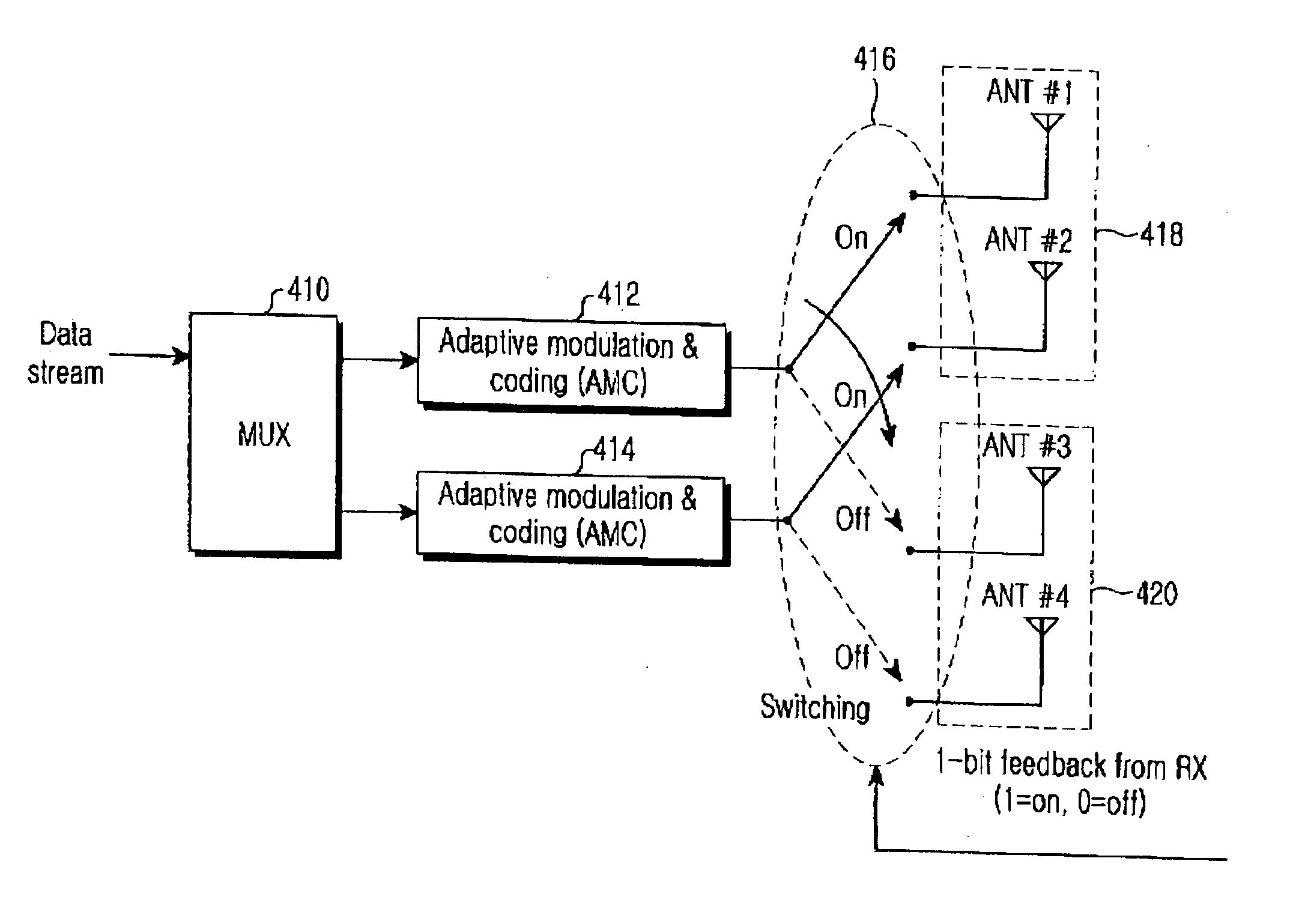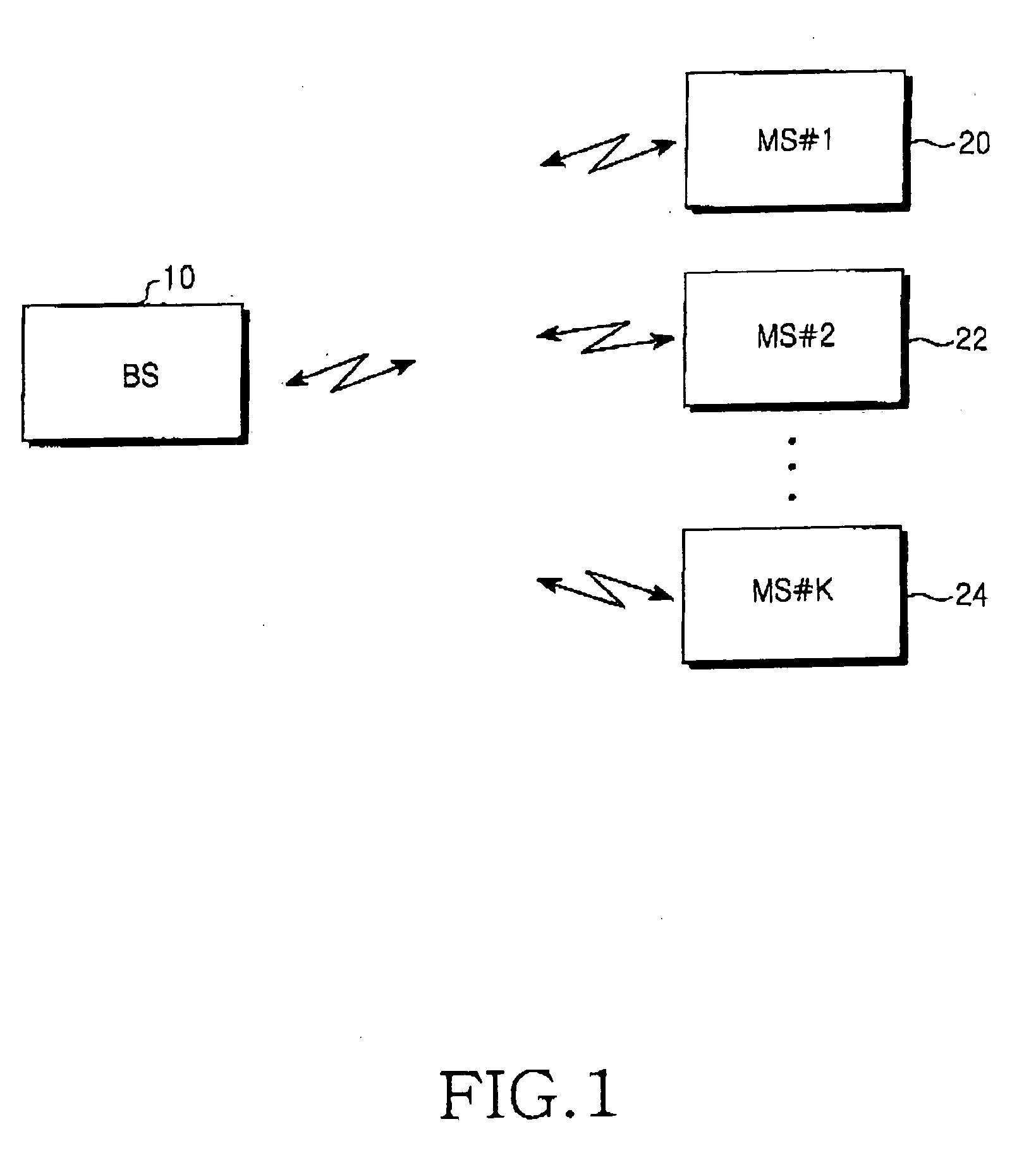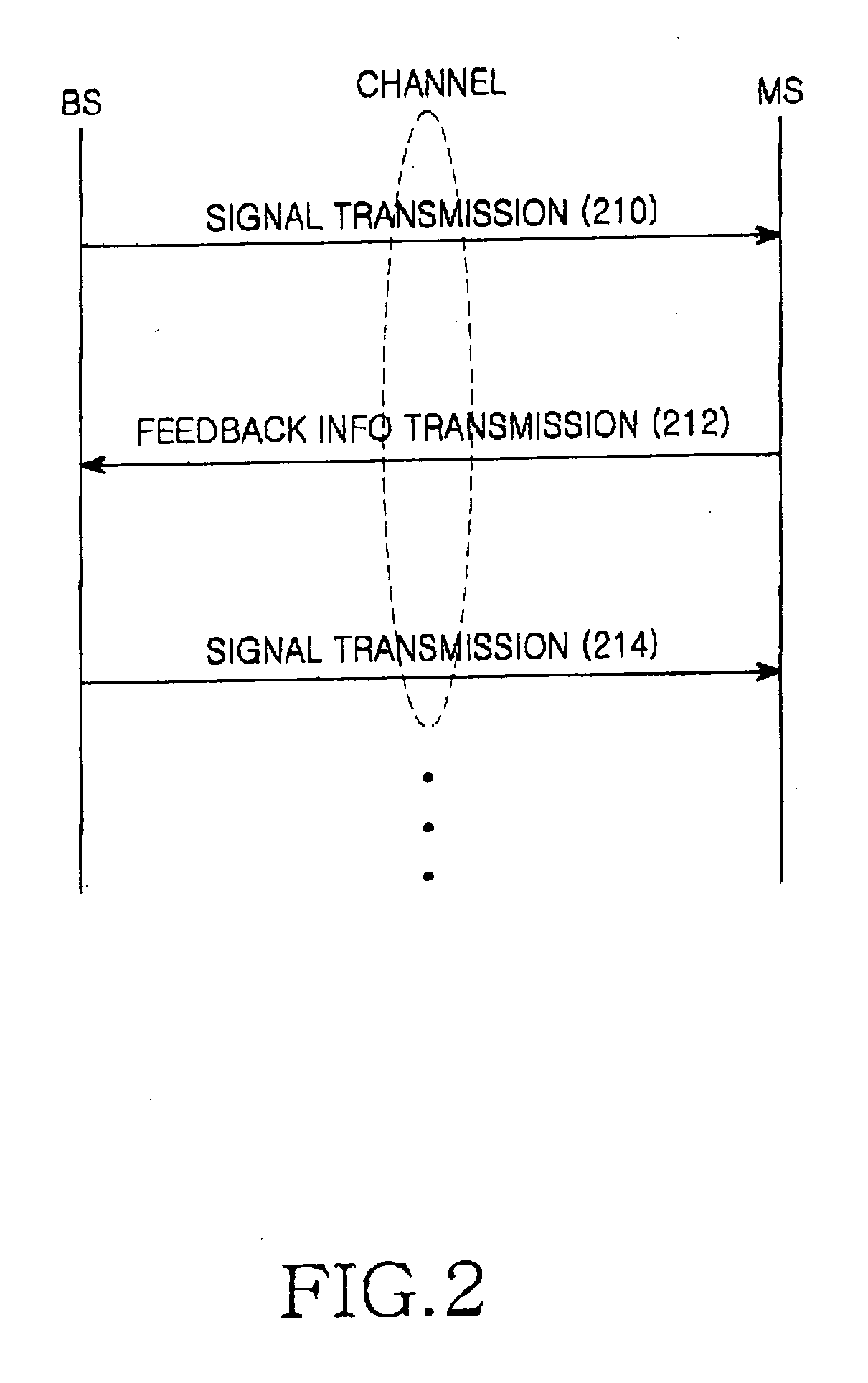Apparatus and method for beamforming in a multi-antenna system
- Summary
- Abstract
- Description
- Claims
- Application Information
AI Technical Summary
Benefits of technology
Problems solved by technology
Method used
Image
Examples
first embodiment
[0062] A detailed description will now be made of a method for generating feedback information and transmitting the generated feedback information in a reception side (i.e. mobile station) according to the present invention.
[0063] A received signal y(t) is defined by Equation 1. y (t)=EsNtH (t) x (t)+n (t)=EsNtH (t) W (t) s(t)+n (t)(1)
where H(t) denotes an Mr×Mt MIMO channel matrix transmitted from a base station (or Node B), s(t) denotes an Mt×1 transmitted symbol vector, n(t) denotes an Mr×1 additive white Gaussian noise (AWGN) vector with distribution CN(0,N0 / 2IMr) for each element, W(t) denotes a matrix used for beamforming transmission, x(t) denotes a signal vector transmitted by a beamformer (x(t)=W(t)s(t))), and y(t) denotes an Mr×1 received symbol vector (t: an index of a timeslot).
[0064] Using the received signal y(t), the mobile station finds a weight matrix provided for obtaining of the maximum throughput or the maximum amount of transmission dat...
second embodiment
[0079] As described above, the present invention allocates different weights W1 and W2 to the transmission antenna groups, which are determined by the feedback information processor 304 (FIG. 3) depending on the feedback information from the mobile station. The feedback information processor 304 (FIG. 3), together with the mobile station, predefines the weights available in the base station, in order to determine the weights. The feedback information processor 304 (FIG. 3) selects weights corresponding to weight index information provided from the mobile station, and delivers the selected weights to the first and second combiners 516 and 518.
[0080] In the base station, the feedback information processor 304 (FIG. 3) can be implemented such that it can calculate different weights to be allocated to the transmission antenna groups depending on the weight index information k. An example of a weight matrix pattern predefined between a base station and a mobile station to allocate differ...
third embodiment
[0089] The weights W11, W21, W12, and W22 in the combiner 616 are determined by the feedback information processor 304 (FIG. 3) depending on the feedback information from the mobile station. The feedback information processor 304 (FIG. 3), together with the mobile station, predefines a weight matrix to be used in the base station, in order to determine the weights W11, W21, W12, and W22. The feedback information processor 304 (FIG. 3) calculates the weights W11, W21, W12, and W22 depending on the feedback information provided from the mobile station. The feedback information processor 304 (FIG. 3) controls an operation of the combiner 616 depending on the weight matrix in which the calculated weights W11, W21, W12, and W22 are reflected. The weight index information is comprised of k1 and k2, each of which is expressed with 2 bits. Therefore, in the present invention, 4-bit weight index information is used as feedback information.
[0090]FIG. 7 graphs performance of each of the first ...
PUM
 Login to View More
Login to View More Abstract
Description
Claims
Application Information
 Login to View More
Login to View More - R&D
- Intellectual Property
- Life Sciences
- Materials
- Tech Scout
- Unparalleled Data Quality
- Higher Quality Content
- 60% Fewer Hallucinations
Browse by: Latest US Patents, China's latest patents, Technical Efficacy Thesaurus, Application Domain, Technology Topic, Popular Technical Reports.
© 2025 PatSnap. All rights reserved.Legal|Privacy policy|Modern Slavery Act Transparency Statement|Sitemap|About US| Contact US: help@patsnap.com



